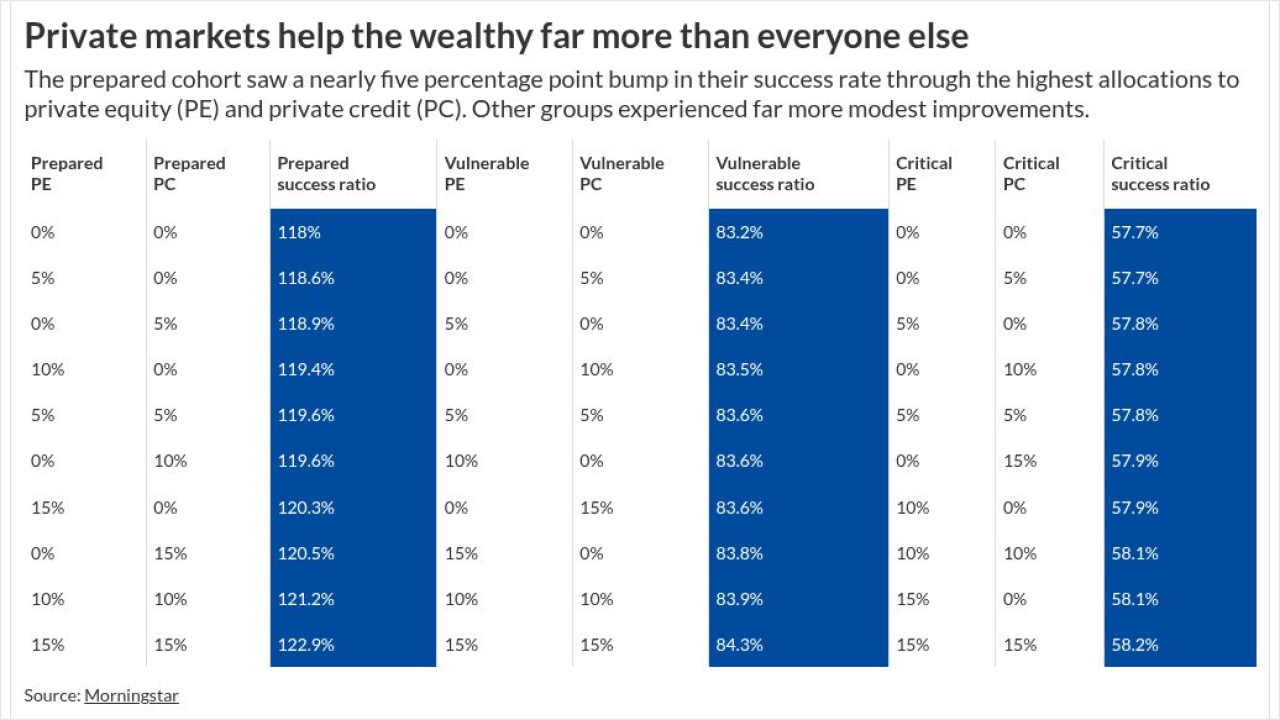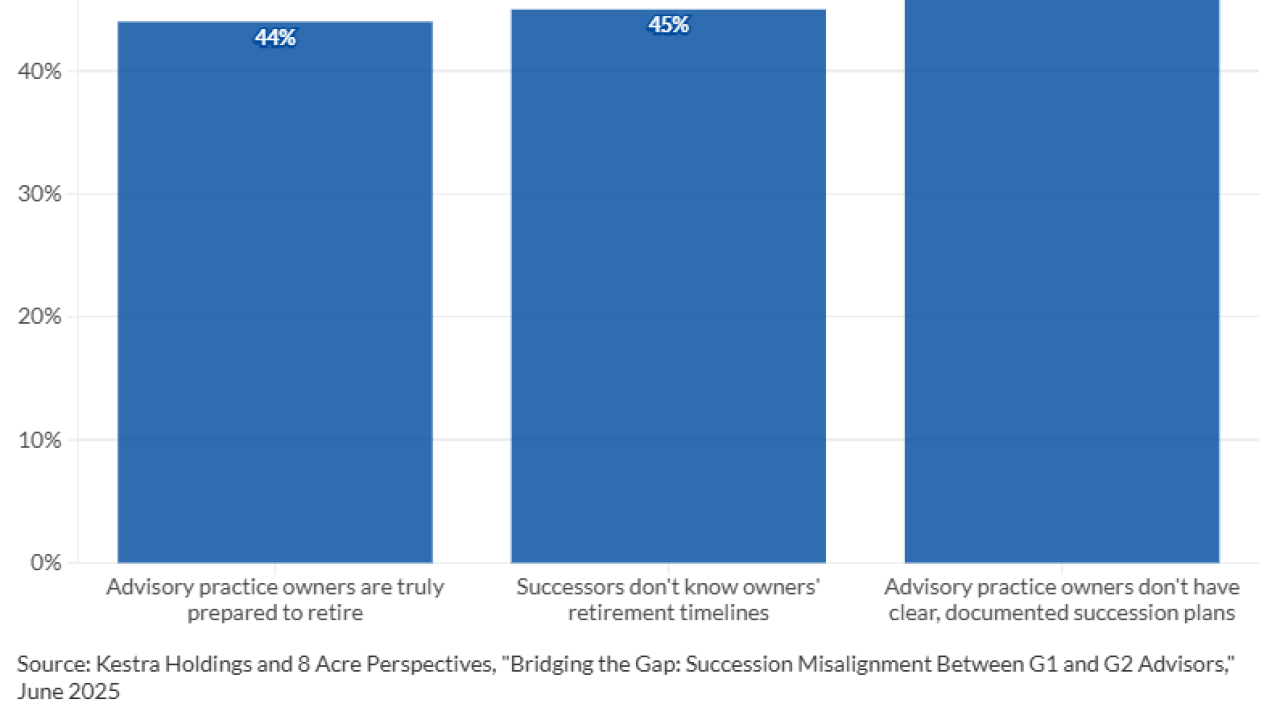Is perpetual independence possible? The founder of one of the countrys largest independent broker-dealers is designing his own estate and succession plan to try to make it a reality.
In a riveting move, Cambridge Investment Research -- ranked No. 9 on the latest FP50 list of U.S. independent broker-dealers -- is constructing a strategy to transfer about $130 million of the companys total $300 million value from founder Eric Schwartz, 60, to company insiders. Ultimately Schwartzs plan would put the entire firm in the hands of Cambridge advisors and employees -- a move aimed at preserving the firms independence indefinitely.
Theres nobody in the industry who has done this with such a large firm, says Schwartz, who is chairman and CEO. This process is pretty much ensuring I will make 20% less [through sales of private stock] than I would by any other means, but it accomplishes what I want to do. It preserves the character and quality of the firm, hopefully, for multiple generations.
Once most components of the estate and succession strategy have been carried out, sometime in 2017, it will consist of several layers: stock transfer plans to advisors and employees; mechanisms to pass shares to charities and, later, back to the firm; and a deep bench of talent from which to select future leaders.
SUCCESSION CHALLENGE
Independent broker-dealers and RIAs of all sizes, with one or a few founders, are facing the quandary of how to design succession plans that will adequately compensate founders while keeping the firm intact. Many firms end up selling to larger competitors, banks, insurance companies or private equity firms, or through public offerings. Indeed, many of Cambridges large competitors have taken one of these routes.
However, each of these scenarios involves turning the reins over to outsiders whose agendas can clash with the culture of the acquired firm. Schwartz vows to pave a new way. He is gambling that transferring ownership internally will preserve the unique culture that he and his team have built at the Fairfield, Iowa-based firm, which is known for its high-touch advisor service.
Getting it right is going to take time and focus and commitment on the part of the management, says Rob Francais, CEO of the third-largest fee-only RIA firm in the country, Los Angeles-based Aspiriant. Though much smaller than Cambridge, Aspiriant is among the biggest U.S. planning firms to have a highly detailed internal succession plan in place. Aspiriant currently has 42 employee shareholders, serves 850 families and has $7.5 billion in AUM. By comparison, Cambridge has 2,241 advisors, $48.5 billion in AUM and will soon have about 60 shareholders.
Personally, I think this is the future, Francais says. Firms that have internal succession plans in place for multiple generations will win because that is what clients want. They want independent advice. They dont want turnover on their account. They want a consistent experience.
The components of the Cambridge succession strategy offer a potential template for other growing firms interested in carving their own independent paths. Some of its tactics may also be worth considering for smaller firms, as well.
Schwartz clearly sees the connection between his business model, his continuity planning and his company culture, which many business owners and advisors have never been taught, said Nick Niemann, an Omaha, Neb., succession planning attorney, after learning of the basic elements of Cambridges approach. In order to preserve a firms value and character, Niemann says, These three concepts ... need to be intentionally and thoughtfully put together as one coherent plan.
Schwartz says he has been thinking about the firms long-term future ever since Cambridge began to reach appreciable size about 15 years ago. But the subject of mortality moved to the fore earlier this year. First, Schwartzs 90-year-old mother died in January. Then, in April, Cambridge suddenly lost its No. 3 executive when Jim Guy, the companys first executive vice president and chief marketing officer, died. Guy had been the fourth member of Cambridges board of directors -- along with Schwartz, president and COO Amy Webber, and advisor Dan Sullivan, now senior VP of marketing. The day Jim passed away, Schwartz recalls, he was on my calendar to speak with me.
The two events pushed Schwartz, who is married but has no children, to continue the work hed begun years earlier on his personal estate plan as it relates to the firms succession plan.
In the coming decades, he says, he plans to transfer 2% to 3% of his stock every year, reducing his approximately 88% stake to 51% -- a move that will eventually increase the number of shareholders to more than 100. And it would probably make sense somewhere down the road, perhaps by the time Im 80, for my interest to go below [51%], he says. Im committed to holding 51% as long as people, by which I mean senior managers and advisors, view that as important.
Other elements of the Cambridge plan cover firm leadership, with a designated heir apparent (Webber) and a bench of talent behind her. For now, Schwartz says, he is increasingly turning over decision-making to Cambridges management.
If something happened to Eric, Webber says, there would be a huge hole in our company, in our family here -- but on the day-to-day task level, things are in place and would carry on.
Keep reading:
Read more:
FP50: Big IBDs Hit a Speed Bump Pioneering Planners Succession Plan Solution B-D Battle for RIAs Heats Up





